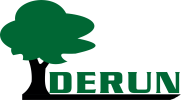Views: 1 Author: Site Editor Publish Time: 2023-09-08 Origin: Site











Pellet activated carbon, (also known as extruded activated carbon, columnar activated carbon), is activated carbon compressed into cylindrical shapes. It serves various purposes and finds wide applications in the removal of pollutants from water, air, catalyst carriers, and odor control.
In this article, I will introduce you to some aspects of columnar activated carbon, including its types, production process, advantages, and applications.
Pellet activated carbon is an efficient adsorbent material characterized by its long and slender columnar or cylindrical shape. Compared to other forms of activated carbon, columnar carbon is quick easier to handle, fix, and stack, making it an ideal choice for many gas-phase adsorption applications.
The adsorption principle of pellets activated carbon lies in its unique pore structure. With a wide range of pore sizes, including micropores, mesopores, and macropores, the differences in pore sizes enable columnar activated carbon to adsorb molecules of various sizes and types.
Through physical and chemical adsorption processes, extruded activated carbon can capture and bind liquid or gaseous substances, thereby purifying the environment or treating specific pollutants. This type of activated carbon is widely used in air purification, waste gas treatment, solvent recovery, water treatment, and other fields.
The production process of extruded activated carbon involves the selection and treatment of raw materials, key steps such as carbonization and activation, ensuring the final product has a well-developed pore structure and adsorption performance.
The production flowchart below illustrates how pellet-activated carbon is manufactured. By following this process, you will gain an understanding of the manufacturing of columnar activated carbon.
The first step involves grinding the raw material coal to a certain fineness (generally above 95% passing through 180 mesh). Raw materials suitable for production include anthracite, coconut shell powder, wood, etc. The commonly used material is taixi coal from Ningxia.
After preparing the raw materials, a certain amount of binder (commonly tar) and water are added. When using the catalytic activation method, a certain amount of catalyst is simultaneously added at a certain temperature for a specified duration. The treated hard coal is mixed with a certain proportion of tar, ensuring uniformity for molding.

Once the added binder and water fully infiltrate, permeate, and disperse evenly with the coal powder, the mixture is pressed into charcoal rods using a molding machine under a specific pressure and with a certain diameter extrusion die. The formed columnar charcoal is then dried under specific conditions to maintain a specific moisture content, usually around 10%, to form a robust charcoal structure.

The dried charcoal is placed in a carbonization furnace, and slowly heated to control the carbonization speed and temperature, reaching the conditions for chemical reactions. This process causes the gradual thermal decomposition and volatilization of organic substances in the charcoal, forming a structure with numerous pores and high carbon concentration.
After carbonization, the raw material undergoes activation to increase its pore structure and surface area. Activation develops more micropores and mesoporous structures, enhancing the adsorption capacity of activated carbon.
Activated carbon pellets may undergo additional treatments such as acid washing or impregnation according to market demands. For example, adding catalysts or special substances to enhance specific application effects.

The produced pelletized activated carbon undergoes quality inspection to ensure compliance with relevant standards and quality requirements. After rigorous inspection, it can be packaged in custom-branded bags or other weight bags for customer use.
The long and slender shape of columnar charcoal enables effective mutual support between particles. This structure helps distribute loads under external forces and pressure, enhancing overall mechanical strength.
Columnar charcoal typically has a smaller surface area, resulting in less friction between particles. This contributes to the reduction of particle wear and weathering.
Activated carbon pellets possess a high specific surface area and porosity, enabling them to adsorb a significant amount of harmful substances, such as organic compounds and heavy metals in water, as well as volatile organic compounds and smoke in the air.
Compared to powdered carbon, extruded activated carbon operations are cleaner and more efficient. The adsorption performance of columnar activated carbon can be regenerated through high-temperature steam or chemical agents, reducing operational costs.
Pellet activated carbon is produced by extruding activated carbon into cylindrical particles with diameters ranging from 0.9 to 6 millimeters. Its high activity and surface area make it an ideal choice for various applications:
Air purification
Removal of pollutants such as ammonia, acid wash gas, H2S, and ether
Biogas desulfurization
Vapor recovery
Odor control
Environmental air treatment
Removal of VOCs in exhaust gas
Gas masks
Pressure swing adsorption (PSA)
Gold recovery
Solvent recovery
Food and beverage
Treatment of ponds, aquariums, and swimming pool water
Impregnated activated carbon: By impregnating specific substances such as KI, KOH
Catalyst carrier
Fixed bed adsorption systems
Wastewater treatment
Gasoline recovery in refineries, gas stations, and oil tanks
By reading the above content, we believe you have gained a further understanding and a more comprehensive awareness of pellet activated carbon.
If you have any questions about activated carbon pellets, as a trusted activated carbon manufacturer, you can find satisfactory answers here.
The dimensions of pellet activated carbon usually vary depending on the application. Different scenarios and requirements may have different specifications and size choices. The typical diameter range can vary from a few millimeters to several centimeters, usually between 0.9 mm and 8 mm, with 4 mm being the most commonly used.
Both types of activated carbon are adsorbent materials, but differences in their structural form and usage lead to varied selections in different application scenarios. Activated carbon pellets is typically cylindrical or rod-shaped, while granular activated carbon consists of irregularly shaped particles. There are significant differences in adsorption performance, application fields, filling, and usage between the two.
What Are The Differences Between Impregnated Activated Carbon And Ordinary Activated Carbon?
Application of coal-based activated carbon in environmental protection field
The Principle And Effect of Activated Carbon Adsorption of Formaldehyde
Application of coal-based activated carbon in flue gas desulfurization and denitrification
